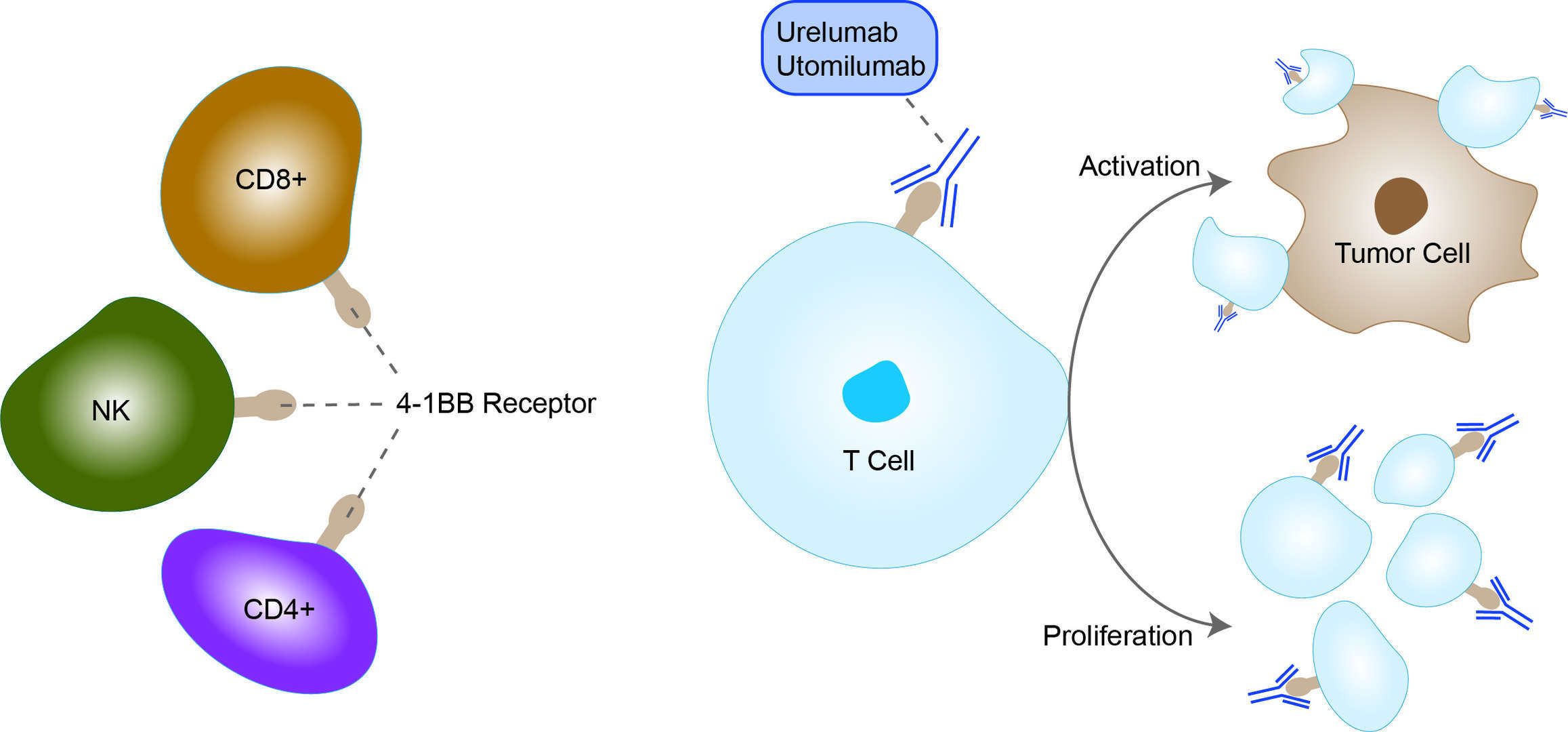Urelumab Overview
Introduction of Urelumab
Urelumab is a fully humanized agonistic monoclonal antibody targeting the CD137 receptor with potential immunostimulatory and antineoplastic activities. Urelumab specifically binds to and activates CD137-expressing immune cells, stimulating an immune response, in particular a cytotoxic T cell response, against tumor cells. Urelumab has been used in trials studying the treatment of Leukemia, Multiple Myeloma, Malignant Tumors, and Cancer-Solid Tumors and B-Cell Non-Hodgkin's Lymphoma. In December 2008, enrolment was stopped for all urelumab studies following the occurrence of two hepatotoxicity-related deaths. Several years later, the clinical study on Urelumab was restarted. At present, the approval of the monoclonal antibody has not been disclosed in the relevant drug approval agency.
Mechanism of Action of Urelumab
4-1BB (CD137, TNFRSF9) is a costimulatory member of the TNF receptor superfamily that is expressed on a variety of immune cells following activation, including T cells, dendritic cells, and natural killer cells. 4-1BB ligation on T cells triggers a signaling cascade that results in upregulation of antiapoptotic molecules, cytokine secretion, and enhanced effector function. In dysfunctional T cells that have a decreased cytotoxic capacity, 4-1BB ligation demonstrates a potent ability to restore effector functions. On NK cells, 4-1BB signaling can increase antibody-dependent cell-mediated cytotoxicity. Urelumab (BMS-663513, clone 10C7; Bristol-Myers Squibb) is an agonist, non-ligand-blocking, fully human mAb, engineered as an IgG4 to reduce binding to Fc receptors with a hinge mutation (S228P) to improve stability. Agonistic monoclonal antibody, Urelumab, targeting 4-1BB have been developed to harness 4-1BB signaling for cancer immunotherapy. Preclinical results in a variety of induced and spontaneous tumor models suggest that targeting 4-1BB with agonist antibodies can lead to tumor clearance and durable anti-tumor immunity.
 Fig.1 Mechanism of action of Urelumab
Fig.1 Mechanism of action of Urelumab
For research use only. Not intended for any clinical use.
This site is protected by reCAPTCHA and the Google Privacy Policy and Terms of Service apply.



